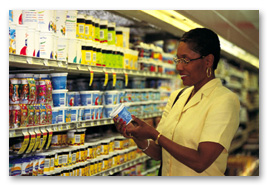First post-op visit (same or next day):
Either later that same day or on the day following surgery, Dr. Schertzer or one of his assistants will see you at the West Coast Glaucoma Centre. Please bring your eyedrops and glasses with you. We will perform a brief examination that includes checking your vision and eye pressure as well as looking in your eye with the microscope (‘slit-lamp biomicroscope.’ The main things we are verifying is that you are not having discomfort that cannot be relieved by just a couple of extra-strength acetaminophen tablets (Tylenol), that the eye pressure is not too high or too low and that there is not too much inflammation.
Subsequent visits within the first 6 weeks:
 All visits from one month prior to surgery until six weeks after surgery are covered by MSP by the fee they pay Dr. Schertzer. In addition to the first post-operative visit described above, subsequent visits are routinely scheduled for 1 week, 3 weeks (glaucoma only), and 6 weeks. Some patients may require additional visits depending on their post-operative course. The visit that occurs within the first week is to make sure there are no signs of an infection developing in your eye. Such an infection, called endophthalmitis, if it is not detected and goes untreated can result in complete blindness and even loss of the eyeball itself. Therefore, at any tie during the post-operative period, should your eye be getting redder, vision decrease or pain increase, you need to be seen by Dr. Schertzer if it is during regular office hours, or present to the Vancouver General Hospital or your local emergency room in order to be seen by the ophthalmologist on-call.
All visits from one month prior to surgery until six weeks after surgery are covered by MSP by the fee they pay Dr. Schertzer. In addition to the first post-operative visit described above, subsequent visits are routinely scheduled for 1 week, 3 weeks (glaucoma only), and 6 weeks. Some patients may require additional visits depending on their post-operative course. The visit that occurs within the first week is to make sure there are no signs of an infection developing in your eye. Such an infection, called endophthalmitis, if it is not detected and goes untreated can result in complete blindness and even loss of the eyeball itself. Therefore, at any tie during the post-operative period, should your eye be getting redder, vision decrease or pain increase, you need to be seen by Dr. Schertzer if it is during regular office hours, or present to the Vancouver General Hospital or your local emergency room in order to be seen by the ophthalmologist on-call.
The post-operative course for cataract surgery tends to be more predictable than for patients undergoing glaucoma surgery. It is sometimes a delicate balance to obtain a final intraocular pressure that is low enough to prevent further glaucoma damage without being so low that the eye starts to collapse or develop ‘effusions’ in the choroid layer that is deep to the retina. With glaucoma surgery, our goal is to create an alternative outflow pathway for the aqueous humour within your eye and prevent it from healing itself closed. On some of your post-operative visits, Dr. Schertzer or his assistant will need to apply some pressure with a finger-tip through your closed lower-lid in order to force the aqueous humour to drain through this new pathway. Another possibility is the need to use an argon laser to break one or more of the sutures to make the fluid flow better. These techniques are both performed at the West Coast Glaucoma Centre and just require topical anaesthesia drops.
